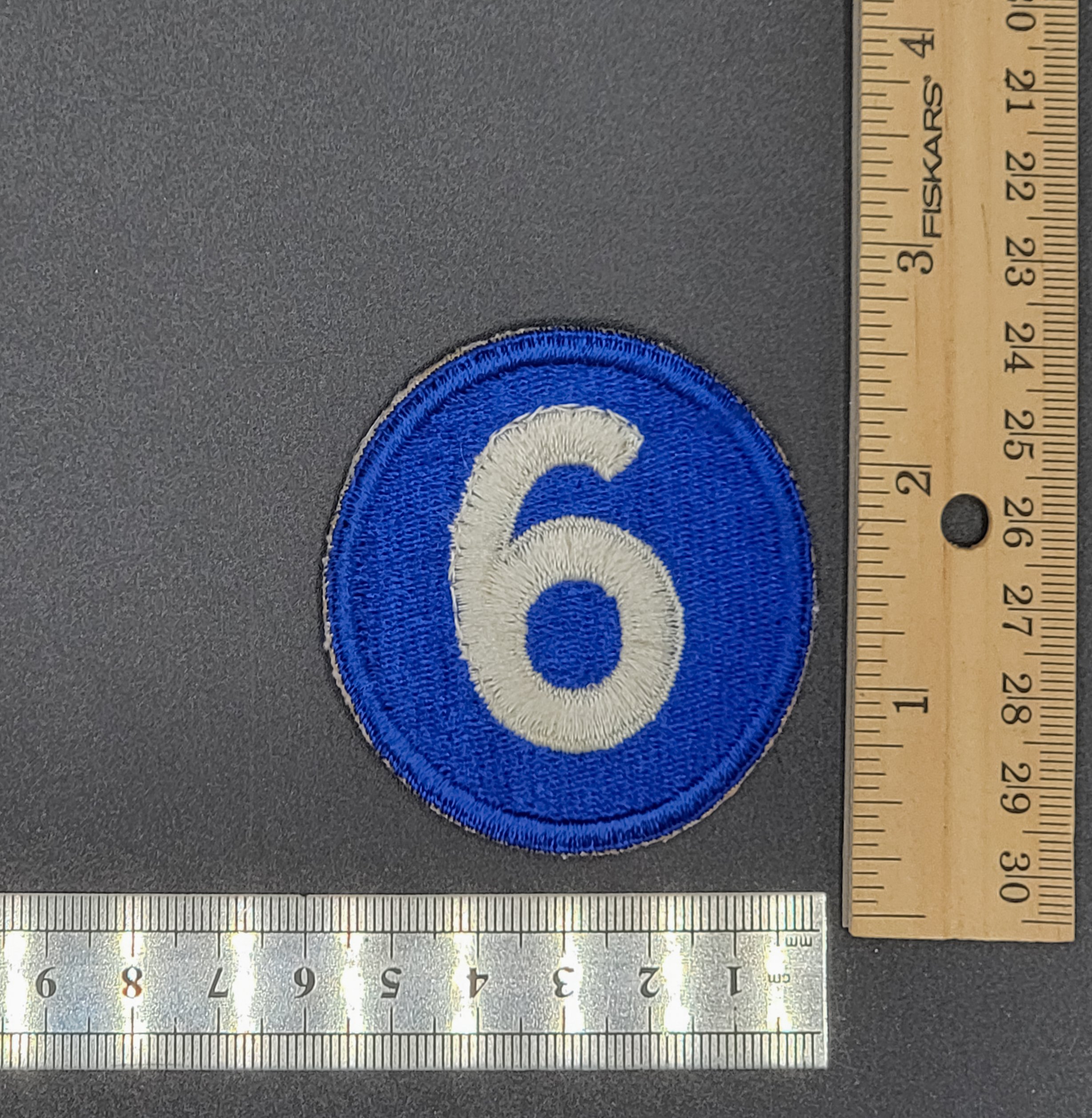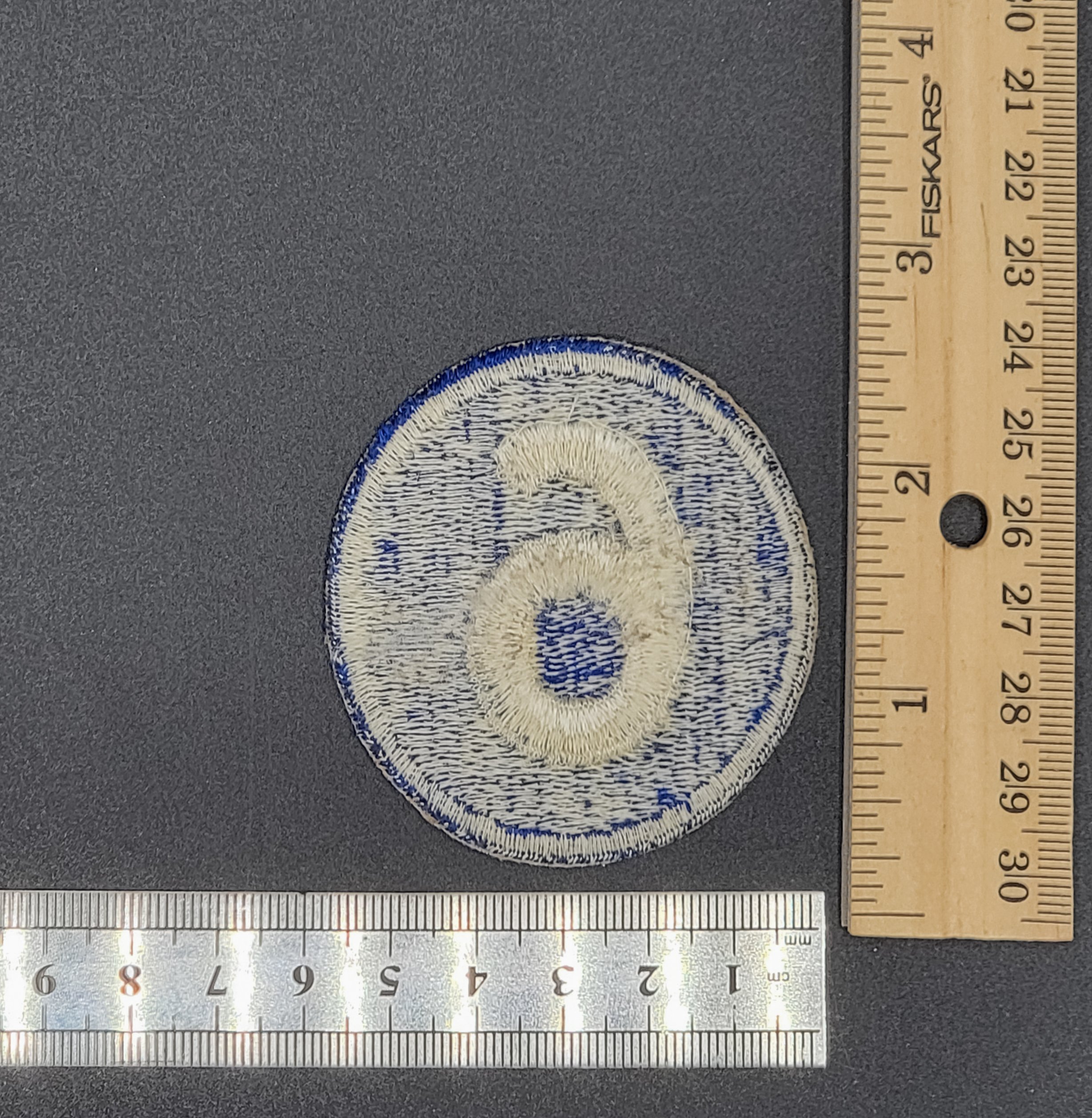 Image 1 of 2
Image 1 of 2

 Image 2 of 2
Image 2 of 2



VI Corps - SNOW BACK
he VI Corps took part in some of the most high-profile operations in World War II. The corps, commanded by Major General Ernest J. Dawley, first saw combat during the Allied invasion of Italy when it landed at Salerno on 9 September 1943, along with the British X Corps, under the command of the U.S. Fifth Army as part of Operation Avalanche. The stiffness of the German defences sorely tested the VI Corps and it suffered heavy casualties before German attempts to throw the Americans back into the sea were thwarted by the artillery of the 45th "Thunderbird" and 36th" Arrowhead" Infantry Divisions, strongly supported by naval gunfire, bombing and the approach of British Eighth Army from the south. Major General Dawley was replaced after the battle, as he was judged to be worn out. He was replaced by Major General John Lucas.
From October to December 1943 VI Corps was involved in a bruising and bloody slog advancing from Naples up the Italian peninsula against the determined rearguard defence of the German 10th Army which skillfully took great advantage of the favorable terrain in organising successive lines of prepared defenses (Volturno Line, Barbara Line and Bernhardt Line). At the end of December, after heavy fighting on the Bernhardt Line (the forward defenses of the formidable Winter Line defenses) without a breakthrough, VI Corps was taken out of the line in an attempt to find a solution to the problem. In its second amphibious assault of the war, it came ashore at Anzio, south of Rome in Operation Shingle in January 1944 which was planned to threaten the rear lines of supply and communication of the German 10th Army. At first German resistance was negligible. However, Major General Lucas felt he needed to consolidate his beachhead before breaking out. This gave the Germans critical time to concentrate forces against him. Another bloody stalemate ensued, with the corps almost being driven back into the sea for the second time in Italy, again being rescued by naval and air power. When the stalemate was finally broken in the spring of 1944, the corps had lost another commander; Lucas was sacked for his poor performance and replaced by Major General Lucian Truscott, previously the commander of the 3rd Infantry Division. VI Corps also commanded units of the British Army during its time at Anzio, the British 1st Infantry Division, from 20 January until 21 May, and the British 2nd Commando Brigade and later, in mid-February, the British 56th Infantry Division and, from late March until 22 May, the British 5th Infantry Division.
When the corps broke out during Operation Diadem, it was ordered by the Fifth Army commander, Lieutenant General Mark Clark, northwest up the coast towards Rome instead of advancing northeast to block the German line of retreat from Cassino on the Gustav Line, leading to prolonged and bloody combat before it was taken by a combination of American, British, Canadian, French, and Polish troops. By disobeying his orders Clark received the glory of capturing the vacant Italian capital–abandoned without resistance by the Germans and left an open city–but was castigated by his peers and superiors for failing to trap and destroy the German forces. This, along with the poor performance at Anzio, would cast a shadow over the reputation of the corps.
he VI Corps took part in some of the most high-profile operations in World War II. The corps, commanded by Major General Ernest J. Dawley, first saw combat during the Allied invasion of Italy when it landed at Salerno on 9 September 1943, along with the British X Corps, under the command of the U.S. Fifth Army as part of Operation Avalanche. The stiffness of the German defences sorely tested the VI Corps and it suffered heavy casualties before German attempts to throw the Americans back into the sea were thwarted by the artillery of the 45th "Thunderbird" and 36th" Arrowhead" Infantry Divisions, strongly supported by naval gunfire, bombing and the approach of British Eighth Army from the south. Major General Dawley was replaced after the battle, as he was judged to be worn out. He was replaced by Major General John Lucas.
From October to December 1943 VI Corps was involved in a bruising and bloody slog advancing from Naples up the Italian peninsula against the determined rearguard defence of the German 10th Army which skillfully took great advantage of the favorable terrain in organising successive lines of prepared defenses (Volturno Line, Barbara Line and Bernhardt Line). At the end of December, after heavy fighting on the Bernhardt Line (the forward defenses of the formidable Winter Line defenses) without a breakthrough, VI Corps was taken out of the line in an attempt to find a solution to the problem. In its second amphibious assault of the war, it came ashore at Anzio, south of Rome in Operation Shingle in January 1944 which was planned to threaten the rear lines of supply and communication of the German 10th Army. At first German resistance was negligible. However, Major General Lucas felt he needed to consolidate his beachhead before breaking out. This gave the Germans critical time to concentrate forces against him. Another bloody stalemate ensued, with the corps almost being driven back into the sea for the second time in Italy, again being rescued by naval and air power. When the stalemate was finally broken in the spring of 1944, the corps had lost another commander; Lucas was sacked for his poor performance and replaced by Major General Lucian Truscott, previously the commander of the 3rd Infantry Division. VI Corps also commanded units of the British Army during its time at Anzio, the British 1st Infantry Division, from 20 January until 21 May, and the British 2nd Commando Brigade and later, in mid-February, the British 56th Infantry Division and, from late March until 22 May, the British 5th Infantry Division.
When the corps broke out during Operation Diadem, it was ordered by the Fifth Army commander, Lieutenant General Mark Clark, northwest up the coast towards Rome instead of advancing northeast to block the German line of retreat from Cassino on the Gustav Line, leading to prolonged and bloody combat before it was taken by a combination of American, British, Canadian, French, and Polish troops. By disobeying his orders Clark received the glory of capturing the vacant Italian capital–abandoned without resistance by the Germans and left an open city–but was castigated by his peers and superiors for failing to trap and destroy the German forces. This, along with the poor performance at Anzio, would cast a shadow over the reputation of the corps.